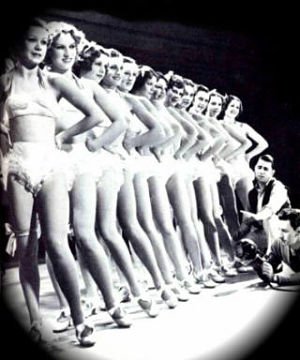Welcome back! In our last blog article on the topic, we began to look at the breakdown of a great center-warm up for your preteen musical theatre dancers which will start to prepare them for across the floor, center combinations and full-length performance pieces! With enough thoughtful repetition and explanation, dancers will also start to inhabit the stylistic nuances of the works you are choreographing and help them develop the understanding and body placement to achieve the details and initiation of movement! In this article we will be looking at the progression of across the floor exercises and how to take those movements to create in-studio combinations which are fun and full of the drama the musical theatre genre is best known for!
Across the Floor: Part I: Leg Extensions: When working across the floor straight from center warm-up I like to first start with progressions of leg extensions. Have your dancers either work in a second position port de bras (or for more advanced dancers, stretched Fosse Jazz hands perhaps) and travel across the floor in step-tendus. This will help dancers understand how to stretch the feet while traveling and elongating the leg with a full stretch behind the knee. Progress this to: traveling degages, 45 degree battements and 90 degree battements (always attending to front, side and back positions)
Part II: Jazz Walks: Jazz walks are essential for any musical theatre class. Not only are there many variations on a theme regarding the “jazz walk” but also serve as a great transition movement within choreography! Jazz walks can be tricky because it’s important for students to understand that there is a distinct style element that coincide with walks whether it is in the position of the hands, the addition of a hip isolation, the sustained follow-through of resistance of the muscles, etc. With beginner students start basic with no arms having them focus on the musicality aspect of walking. Teachers can then progress the exercise to include the additives mentioned above and even incorporate focus, facing and direction changes while playing with tempo/ rhythm changes as well!
Part III: Turns: Turns are one of the most important elements to any genre and can be abstracted in many ways to portray style and character work in musical theatre. Always starting with basic clean preparations and single turns for beginner; more intermediate or advanced dancers can focus on multiple parallel jazz pirouettes, soutenous turns in plie forced-arch, chaine turns with jazz hands or a combination of some of these turns together. Also try integrating the jazz walks as a preparation into turns or coming out of turns to segue into the next set of turns!
Part IV: Elevations: As a musical theatre chorus girl myself, I can tell you it’s unlikely that girls, in particular, will be doing any variation of switch leaps, leaps in second, straddles, etc, (unless cast in a very specific show) should your student go on to become Broadway dancers themselves. However, it is still extremely important to include this in your musical theatre technique class to build flexibility, understanding of execution, etc! Again, focus on the preparations and clean footwork in and out of leaps and spend ample time on barrel turns, stag leaps, glissades, saut de chats, grande jetes and leaps in second. This might come in handy if you plan to be setting more contemporary works like Footloose, Wicked, etc.
Center Combinations: Once you get to the center, think about all the movement your dancers have already explored week to week and learned throughout warm up and across the floor. It will be an easy transition to use movement they have already been learning; but now add a stylistic change into the mix. For example, if you are setting a Latin number from West Side Story or Evita, think about how the arm positions, upper body placement, turns etc, can be adapted to what the dancers have already been learning to incorporate a Latin flavor. If you are using music from a Chorus Line how can you incorporate variations of clean pirouettes, body line and stylized jazz walks into the combo? When doing a 50’s, 60’s combo from Grease or Hairspray how can you incorporate leaps and big battements with jazz runs or walks while representing the period of the piece? When working with preteen musical theatre dancers, remember there are tons of variations on a theme to include basic technique which can inherently start to develop style and understanding of varied movement initiation; suited for a specific piece for a specific show! Remember their center warm-up, across the floor and center combos seen week to week in class will be a great tool to transitioning into your full length pieces come performance season!
Good luck & Have fun!
See you in the dance studio,
Jessie


